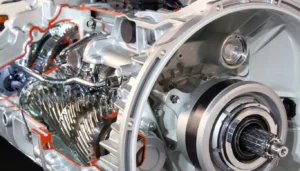Motorcycle riders have a significantly greater degree of control over where in the lane they are positioned than car drivers do. When riding a motorcycle, it is easy to change your position on the road or act as a bridge between two other vehicles.
When it comes to riding a bike in a way that is both safe and effective on the road, one of the most valuable skills is the ability to change positions in a quick and precise manner.
Because changing lanes is so important, many courses for more experienced riders include a test on the skill.
Unfortunately, not all riders are aware of the advantages that come with lane splitting, let alone how to do it in a way that is both safe and efficient.
Let’s take a look at the reasons why you might want to ride your motorcycle on the left or right side of the lane, as well as the ways in which you can accomplish this in an efficient and safe manner while adhering to the regulations established by the law in your state.
What Are The Safety Benefits of Lane Splitting?
Most drivers often split lanes, whether they know it or not. The difference between this style of riding and lane splitting is that you are in charge of where you are positioned in the lane, and you are aware of the reasons behind your decision to ride in that location.
Lane splitting can be helpful for motorcyclists in a number of ways, including making it less likely that another car will hit them from behind. reduces the likelihood of being involved in a head-on collision.
A lower probability of being stopped by traffic on the freeway When compared to riding in heavier traffic, less wear and tear is put on the bike as a result.
If you live in an area that has a lot of traffic or if you ride a cruiser or another type of bike that has limited power and acceleration, these benefits are especially important for you to take advantage of.
For motorcycles to be driven safely, they need to keep a large distance between themselves and other cars. Lane splitting is the easiest way to do this.
Why Do Motorcycles Split Lanes?
One of the primary reasons for lane splitting is that motorcycles are compact and quick, allowing riders to navigate through tight spaces even when there is a lot of traffic.
Still, lane splitting gives motorcyclists more space to ride and lets them take advantage of gaps in the flow of traffic and find a spot where they can leave the flow of traffic safely if they need to.
When a bike is traveling in the middle of a lane, it is subject to the same types of delays as any other vehicle that may be on the road at the time.
Motorists can get around this obstacle by finding places to exit the flow of traffic in order to avoid being held up by it if they practice lane splitting.
Depending on the specifics of the situation, lane splitting can have both positive and negative outcomes for drivers.
Splitting lanes is an option for motorcyclists who find themselves in a lane that moves more slowly than the rest of the traffic and want to get to their destination as quickly as possible.
On the other hand, if a motorcyclist is disrupted while traveling in lanes that are less clogged, it is highly likely that they will only be moving at the same speed as the flow of traffic that is around them.
Defensive Position During A Merge or Change In Speed?
If you are riding on the left or right side of the lane, you will find that it is much simpler and quicker to defend your position whenever there is a merge or a change in speed.
Think about a situation where a car is trying to “sneak” in front of you at a place where the speed changes or where cars are merging, like a turn, a stop sign, or a traffic light.
You can effectively prevent the car from passing you by moving to the left or right side of the lane.
This will allow you to do so more quickly. You will want to be very careful not to cross the white line into the other lane, but you can effectively defend your position by using the side of the lane.
Showing Road Position
Riding at the front of the lane allows you to show your road position to other drivers in the lane. Since other motorcycles will be trying to follow the car in front of them, they will naturally also be following your lane position.
This is particularly helpful in areas with narrow lanes, high traffic density, and where lane changes are common. By staying in your lane, you can make it harder for other drivers to drift into yours. This can prevent a lot of dangerous and potentially deadly side-swipes and rear-end collisions that can be caused by “cutting in” too quickly.
How To Ride a Motorcycle in a Safe Lane Split?
When it comes to the practice of lane splitting, it is essential to keep in mind that the law is not on your side, just as it is with any other safe riding technique.
This indicates that you need to put in as much effort as possible in order to maintain your safety while driving. Manual and automatic lane splitting are the two primary variants of this driving technique.
When you manually split lanes, you change lanes on your own accord in order to get around another vehicle that is traveling in only one lane.
After you have completed your overtaking moves, you should return to your previous lane.
When you are constantly switching lanes, you will experience something called “automatic lane splitting.”
You can only use this method if your speed is the same as or slower than the speed of the cars in the lane to your left.
What are the other benefits of motorcycle lane splitting?
We’ve already covered the safety benefits of lane splitting, but there are a few other benefits as well.
One of them is the potential to save money.
By lane splitting, you can reduce the amount of fuel that you use, which could save you money in the long run.
Another potential benefit is convenience. If you’re traveling significantly faster than the flow of traffic, you could potentially get to your destination sooner.
If you’re late for an appointment or running behind for another reason, this could be a significant advantage.
If you’re traveling on a particularly busy stretch of road, lane splitting can help reduce the risk of being cut off by another vehicle.
Motorcycles are more likely to look out for motorcycles when they are in the middle of the lane than when they are on the left or right side of the lane.
What Are The Limitations of Motorcycle Lane Splitting?
There are also some restrictions associated with using multiple lanes. I have mentioned a few below so that you will be aware while splitting lanes.
While lane splitting presents a number of challenges, one of the most significant is that it is extremely challenging to switch lanes.
Because of this, if you do find that you need to switch lanes, you will need to do so much more in advance than you would if you were driving a car.
Most importantly, lane splitting can be challenging to do in situations where there is a lot of traffic.
In order to correctly determine when it is safe to switch lanes, you need to be able to accurately judge the speed of the cars that are surrounding you, as well as the distance between you and them.
The second significant challenge is that it is not always guaranteed that other drivers will take you seriously, regardless of which side of the road you are on (the left or the right).
They might mistake you for a car and respond inappropriately as a result.
What Are The Legal Matters of Motorcycle Lane Splitting?
Lane splitting is not explicitly permitted or prohibited in any state. Most states have an “at-your-own-risk” policy, which means that lane splitting is allowed unless and until the state legislature passes laws against it.
This also means that it’s up to each individual motorcyclist to decide whether or not lane splitting is a safe and prudent decision for them.
The main reason for this is that most states know that lane splitting is a personal choice, and they don’t want to force riders to follow laws that may not be right for them. There are, however, a few states that have different laws.
California, Oregon, and Washington have laws that allow lane splitting in specific circumstances.
In California, you can only switch lanes when traffic is going less than 50 miles per hour.
In Washington and Oregon, it is permitted when the flow of traffic is less than 30 mph.
Conclusion
Lane splitting is a riding technique that allows motorcyclists to escape heavy traffic and take advantage of small gaps in the flow of traffic.
There are many reasons why motorcycles lane split, including the reduced risk of being rear-ended by other vehicles, the reduced risk of a head-on collision, the reduced risk of getting stuck in freeway traffic jams, and the reduced wear and tear on the bike compared to riding in heavier traffic.
There are also benefits to lane splitting, including the potential to save money by reducing the amount of fuel that you use, the potential to get to your destination sooner if you’re traveling significantly faster than the flow of traffic, and the reduced risk of being cut off by another vehicle while in the middle of the lane.
There are also some limitations to lane splitting, and lane splitting is not permitted in all states.






